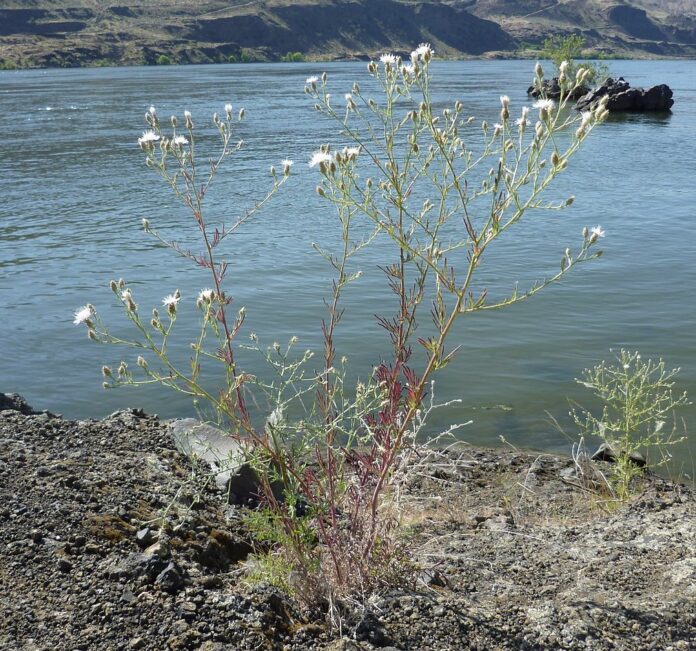
BY BLAINE BUG CREW
The hottest part of summer ushers in one of south-central Idaho’s most noxious invaders, diffuse knapweed. The hot, dry season this time of year mirrors the conditions of knapweed’s home turf, the Mediterranean. This weed is particularly prickly and invasive. Its seed heads are surrounded by thorns, thworting any attempts to mechanically pull it, or have herd animals graze it. Hopefully, as we highlight this weed and its attributes, you will be better able to identify it and make a game plan to keep it from spreading.
Diffuse knapweed is a biennial, or short-lived, perennial reproducing entirely by seed and producing up to 18,000 seeds per plant. Flowers occur singly or in clusters, bloom from July to September, and may be white, pink or lavender. The bracts of the flower heads are tipped with a long, slender spine fringed with smaller spines. Seeds are blackish-brown with vertical brown and gray stripes and about 0.1 inch long. Stems are typically 6 inches to 2 feet tall with deeply divided leaves.
Diffuse knapweed prefers well-drained, light-textured soils and is intolerant of shade. This plant is common along roadsides, at disturbed sites, and in abandoned areas. To date, 13 biological control agents have been approved for release for the knapweed complex, which includes diffuse knapweed.
Knapweed Seed Head Weevil (SHW) include LA spp. Larinus minutus which are abundant biological control agents that can utilize spotted, diffuse and squarrose knapweed. Larinus overwinter as adults which emerge in the spring when they begin to feed on knapweed foliage. Females produce between 28 and 130 eggs, which they lay in clusters in open flowers. Eggs hatch into larvae, which feed on seeds and receptacle tissue for about a month. Larvae construct cocoons within the seedheads using pappus hairs and pupate. Emerging adults chew a characteristic round hole in the top of the cocoon that is visible when viewed from above.
Knapweed is an invasive plant that can produce thousands of seeds in the areas we live in. It can spread at rapid speeds, leaving more weeds in your yard, but we can stop them with bugs. If you have a problem with diffuse knapweed invading your property, you can call Morgan Baird, (208) 788-5543, at the Blaine County Weed Department. She can answer any questions you may have and potentially refer you to the Blaine Bug Crew.


